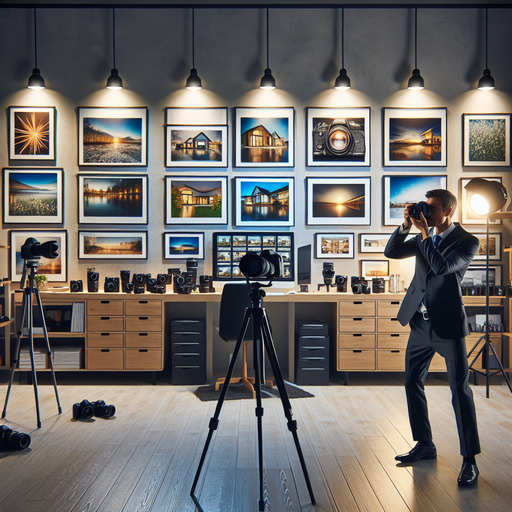
-
Table of Contents
Unlock the secrets to capturing stunning real estate photos that sell! Discover expert tips and techniques now. Learn More
Introduction
Capturing the perfect real estate photography shot requires a blend of technical skill, artistic vision, and meticulous attention to detail. The goal is to present properties in their best light, highlighting their unique features and creating an inviting atmosphere that appeals to potential buyers. This involves understanding the principles of composition, mastering lighting techniques, and utilizing the right equipment. Additionally, post-processing skills are essential to enhance the final images, ensuring they are both realistic and visually appealing. By combining these elements, photographers can create compelling images that effectively market real estate properties and attract prospective clients.
Mastering Real Estate Photography: Tips, Equipment, and Techniques for Perfect Property Shots
Capturing the perfect real estate photography shot requires a blend of technical skill, artistic vision, and an understanding of the property’s unique features. To begin with, the right equipment is essential. A high-quality DSLR or mirrorless camera with a wide-angle lens is a must-have, as it allows you to capture expansive views of rooms and exterior spaces. Additionally, a sturdy tripod is crucial for maintaining stability and achieving sharp images, especially in low-light conditions.
Lighting plays a pivotal role in real estate photography. Natural light is often the best option, as it provides a warm and inviting atmosphere. Therefore, scheduling your shoot during the golden hours—shortly after sunrise or before sunset—can yield the most flattering light. However, relying solely on natural light may not always be feasible. In such cases, using external flashes or continuous lighting can help illuminate darker areas and create a balanced exposure. It’s important to avoid harsh shadows and overexposed highlights, which can detract from the overall appeal of the property.
Composition is another critical aspect to consider. The goal is to showcase the property’s best features while providing a sense of space and flow. One effective technique is to shoot from the corners of rooms, as this perspective can make spaces appear larger and more inviting. Additionally, keeping the camera at a height of about five feet ensures a natural and consistent viewpoint. When framing your shots, pay attention to lines and symmetry. Straightening vertical and horizontal lines in post-processing can enhance the professional quality of your images.
Moreover, decluttering and staging the property can significantly impact the final result. A clean, well-organized space allows potential buyers to envision themselves living in the home. Removing personal items, excess furniture, and any distractions can create a more appealing and neutral environment. In some cases, hiring a professional stager can be beneficial, as they can arrange furniture and decor to highlight the property’s strengths.
Post-processing is the final step in achieving the perfect real estate photography shot. Editing software such as Adobe Lightroom or Photoshop can be used to adjust exposure, contrast, and color balance. Additionally, correcting lens distortions and straightening lines can further enhance the image’s quality. While it’s important to make the property look its best, it’s equally crucial to maintain a realistic representation. Over-editing can lead to unrealistic images that may disappoint potential buyers when they visit the property in person.
In conclusion, mastering real estate photography involves a combination of the right equipment, effective lighting, thoughtful composition, meticulous staging, and careful post-processing. By paying attention to these elements, you can create stunning images that capture the essence of a property and attract potential buyers. As you gain experience and refine your techniques, you’ll develop a keen eye for what makes a property stand out, ultimately leading to more successful real estate transactions.
Q&A
1. **Question:** What are some key tips for capturing the perfect real estate photography shot?
**Answer:**
– Use a wide-angle lens to capture more of the room.
– Ensure proper lighting, preferably using natural light.
– Stage the property to make it look inviting and spacious.
– Use a tripod to keep the camera steady and avoid blurry images.
– Shoot from chest height to provide a natural perspective.
– Edit photos to enhance brightness, contrast, and color balance.